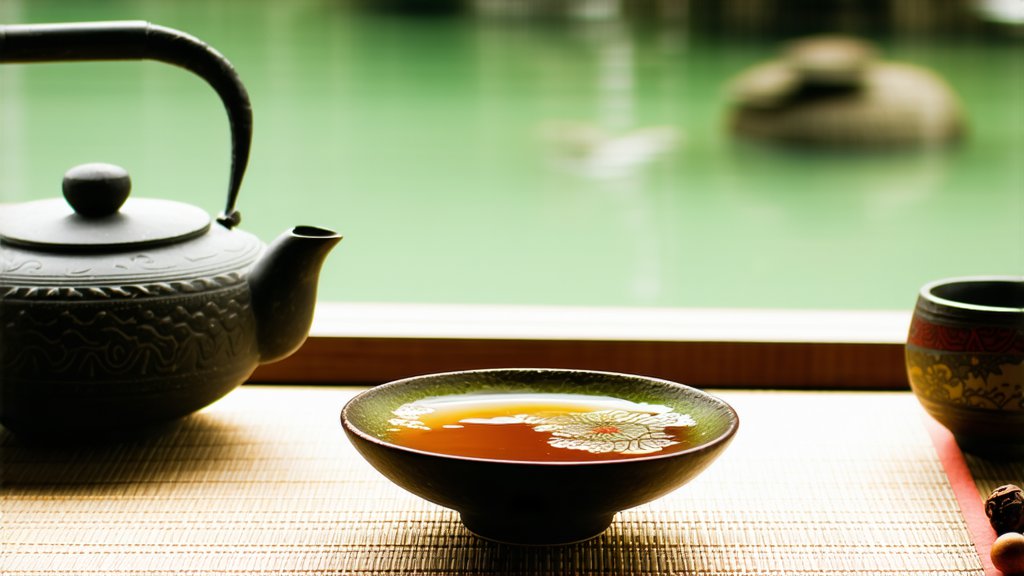
Pu-erh tea, often referred to as the "dark horse" of the Chinese tea world, stands as a testament to the rich heritage and sophisticated craftsmanship that define China's tea culture. This fermented tea from Yunnan province has captivated tea enthusiasts for centuries, not only for its unique flavor profile but also for its storied history and the meticulous processes involved in its creation. In this article, we delve into the depths of Pu-erh tea, exploring its historical roots, varieties, production methods, and the art of tasting this exceptional beverage.
A Glimpse into History
The origins of Pu-erh tea can be traced back to the ancient Tea Horse Road, a trade route that connected Yunnan province with Tibet and other regions of China. It was along this route that tea became a prized commodity, exchanged for horses and other goods. The unique climate and geography of Yunnan, coupled with the ingenuity of local tea farmers, gave birth to Pu-erh tea. Unlike other Chinese teas that are primarily green or oolong, Pu-erh undergoes a fermentation process akin to that of aging wine, which imparts its distinctive earthy flavor and health benefits.
Varieties of Pu-erh Tea
Pu-erh tea comes in two primary forms: raw (Sheng) and ripe (Shou). Each type has its own characteristics and appeals to different palates.
-
Raw Pu-erh (Sheng): This variety is made from sun-dried maocha leaves and aged naturally over time. The aging process allows the tea to develop complex flavors and aromas, often described as floral, fruity, or woody, depending on the length of aging and storage conditions. Raw Pu-erh is highly prized for its potential to improve in quality with age, much like fine wine.
-
Ripe Pu-erh (Shou): In contrast, ripe Pu-erh undergoes a accelerated fermentation process known as "wet piling," where piles of tea leaves are kept moist and warm to encourage microbial activity. This process typically takes several months and results in a tea with a mellow, smooth taste, often featuring notes of caramel, earth, and sometimes a hint of sweetness. Ripe Pu-erh is generally more approachable for newcomers due to its gentler flavor profile.
The Art of Crafting Pu-erh Tea
The production of Pu-erh tea involves several intricate steps, each contributing to the final product's character and quality.
-
Picking: Only the youngest leaves and buds are harvested, usually during the spring season when they contain the highest levels of nutrients and flavor compounds.
-
Withering: Freshly picked leaves are spread out to wilt under the sun, reducing moisture content and softening the leaves for subsequent processing.
-
Rolling and Shaping: The withered leaves are rolled into tight spirals or pressed into cakes, bricks, or other shapes, which helps to maintain their structure during fermentation.
-
Fermentation (for Sheng): For raw Pu-erh, the rolled leaves are left to dry in the sun before being packed away for natural aging. Over time, enzymes break down the tea's components, transforming its flavor and aroma.
-
Wet Piling (for Shou): Ripe Pu-erh undergoes a controlled fermentation process where the tea piles are regularly turned and monitored to ensure even fermentation. This process can take several months and results in a more uniform taste across batches.
-
Drying and Packaging: After fermentation, the tea is dried thoroughly to halt further fermentation and then packaged for sale or further aging.
Tasting Pu-erh Tea: A Sensory Experience
Tasting Pu-erh tea is an art form that engages all five senses. Here's how to appreciate its nuances fully:
-
Visual Appreciation: Observe the tea's appearance—the color and shape of the leaves and any visible veins or stems can offer clues about its age and quality.
-
Aroma: Before brewing, smell the dry leaves to detect their base scent. As you brew, pay attention to the evolving aromas released by hot water, which may range from earthy and woody to floral and fruity.
-
Brewing: Use water heated to around 200°F (93°C) for raw Pu-erh and slightly cooler for ripe Pu-erh. Rinse the tea leaves briefly to "wake" them up before making the first steep. Multiple infusions can be made, each revealing different layers of flavor.
-
Tasting: Take small sips, allowing the tea to coat your palate fully. Notice the initial taste, mid-palate sensations, and aftertaste. Pu-erh teas are known for their complexity, with flavors that can evolve throughout each session.
-
Texture: The mouthfeel of Pu-erh tea, whether it feels thick and creamy or light and astringent, adds another dimension to the tasting experience.
In conclusion, Pu-erh tea is not just a beverage; it's a cultural treasure that embodies centuries of tradition and innovation. Its journey from leaf to cup encapsulates the harmony between nature and human craftsmanship, offering a sensory adventure that transcends time and borders. Whether you're a seasoned tea connoisseur or a curious beginner, exploring the world of Pu-erh tea promises a rewarding and enlightening experience.